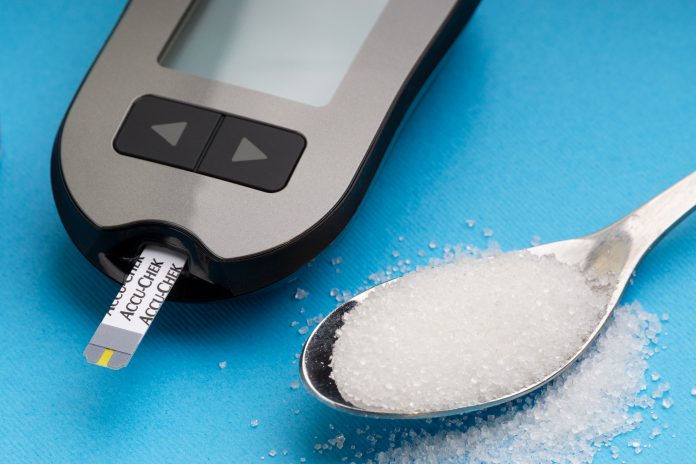Cecilia Van Cauwenberghe from Frost & Sullivan’s TechVision Group considers how the standard of healthcare for patients with diabetes is impacted by COVID-19
With more than 425 million people suffering the world over, diabetes is a growing global concern. According to the World Health Organization (WHO, 2020), diabetes is as well the leading factor causing blindness, kidney malfunction, heart failure, stroke and lower limb amputation.
The WHO also depicts diabetes prevalence as rapidly rising in low- and middle-income countries. Nevertheless, developed countries such as the United States exhibit dramatic statistics around diabetes facts. Indeed, 10.5% of the U.S. population (34.2 million people) are affected by some type of diabetes. Moreover, an important number of cases near 7 million are presumed undiagnosed in this country alone. Furthermore, prediabetes could reach 34.5% of the adult U.S. population, with more than 88 million people over 18 years old (CDC, 2020).
In the European Region, the WHO reported nearly 60 million people with diabetes, with an increasing prevalence of the disease among all ages. Leading causes are associated with overweight and obesity derived from an unhealthy diet and lack of physical activity.
Consequently, medical associations are intending to provide key recommendations for diabetes prevention. The American Diabetes Association (ADA) “Standards of Medical Care in Diabetes” published in 2020 comprehends a new set of guidelines for diabetes care (ADAa, 2020).
Key aspects to observe around diabetes and COVID-19
In light of COVID-19, promptings were made by leading research centres on the possible pathophysiological mechanisms illustrating the correlation between diabetes and COVID-19 to better manage clinical complications. Diabetes has been directly associated with severity and death in patients with COVID-19 (Hussain et al., 2020). This fact finds evidence in the increased morbidity and mortality suggested being linked to inflammation, hypercoagulation, and impaired immunity processes. Customised therapies for diabetes treatment have become absolutely necessary for rigorous glucose monitoring and insulin or anti-diabetic drugs dose adjustments.
Close monitoring of glucose and diabetes management
There are four main categories of medical devices that are essential for diabetes close monitoring and optimal management (Lal, 2020): (1) self-monitoring of blood glucose (SMBG); (2) professional point-of-care testing (POCT) devices; (3) continuous glucose monitoring (CGM); and (4) insulin pens and insulin pumps. Efforts to encourage early diagnosis and screening have led to the use of personal-use home glucometers. More professionally, POCT testing is expected to continue to record double-digit growth over the next five years. Despite the high cost of home-use glucometers, there is a high demand for POCT devices, especially strengthened under COVID-19 pandemic lockdown and limited access to conventional medical centres (ADAb, 2020).
According to Frost & Sullivan (Lal, 2020), companies are tapping mostly into two key opportunities: (1) Establishing new partnerships with Tier II hospitals and/or with hospitals operating at either remote locations or rural regions with the purpose to facilitate personal glucose testing by creating additional access and distribution channels; (2) Consolidating partnerships between medical devices developers and independent diagnostic labs as a unique opportunity to offer highend device models to Tier I hospitals and provide physicians and clinicians with the adequate training based on the benefits of new technologies such as
CGM systems, insulin pens and insulin pumps, to get the patients on board when it comes to an adequate standard of medical care for diabetes.
Final remarks on diabetes healthcare
Under the COVID-19 umbrella, successful monitoring and management of diabetes demand important efforts to promote early diagnosis by helping patients to recognise their symptoms to prompt medical treatment. Screening camps and provision of glucometers are important measures to take into account, guaranteeing the standard of medical care in diabetes management. These efforts need to be aligned with the proper education of patients and care providers, conveniently exhibiting the value of CGM and insulin pens and pumps to better help patients across their journey to effectively draw benefit from the use of these devices.
Acknowledgements
I would like to thank all contributors from industry involved with the development and delivery of this article from Frost & Sullivan.
Further reading
1) American Diabetes Association, 2020. 2. Classification and Diagnosis of Diabetes: Standards of Medical Care in Diabetes-2020. Diabetes Care, 43(Suppl 1), p.S14.
2) American Diabetes Association, 2020. 7. Diabetes technology: Standards of Medical Care in Diabetes—2020. Diabetes Care, 43(Supplement 1), pp.S77-S88.
3) Centers for Disease Control and Prevention, 2020. National diabetes statistics report, 2020. Atlanta, GA: Centers for Disease Control and Prevention, US Department of Health and Human Services.
4) Hussain, A., Bhowmik, B. and do Vale Moreira, N.C., 2020. COVID-19 and diabetes: Knowledge in progress. Diabetes research and clinical practice, p.108142.
5) Lal, U. 2020. Diabetes Devices Market, Forecast to 2023, Frost & Sullivan Research Service, Growth Insights, PAC2, Healthcare.











